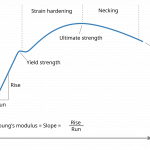Key Takeaways
- Impulse Excitation provides a fast, non-destructive way to verify the mechanical quality of glasses and lenses before they reach customers.
- By measuring resonance frequency, manufacturers can detect defects at an early stage and reduce costly waste.
- This method can improve quality control for optical products, ensuring consistency across large production runs.
- Advanced tools like GrindoSonic systems make implementing Impulse Excitation efficient and user-friendly in industrial settings.
Enhancing Glass and Lens Quality Through Smart Testing
Every lens or glass product undergoes multiple production stages—coating, thermal treatment, shaping, polishing—each introducing subtle changes to the material’s atomic structure. These changes can directly affect the durability, clarity, and performance of the final product. For manufacturers, the challenge lies in detecting these variations before products leave the factory.
Impulse Excitation has emerged as a powerful solution in this space. Known for its speed and precision, it offers a clear competitive advantage to optical manufacturers seeking both performance reliability and customer satisfaction. By integrating this testing approach, brands can cement themselves as leaders in quality assurance and innovation.
Understanding Impulse Excitation for Optical Materials
Impulse Excitation is a non-destructive material testing method that measures the resonance frequency of a sample when gently tapped or given a small mechanical impulse. In glasses and lenses, this resonance profile acts like a fingerprint—unique to the piece and affected by every step in its manufacturing journey.
Why Resonance Matters in Optics
- Predicts mechanical strength and rigidity without damaging the sample.
- Accurately identifies inconsistencies that visual inspections might miss.
- Provides repeatable, reliable data for ongoing quality control.
Production environments benefit from the clarity of resonance data, making it easier to flag defective units before they reach the customer. This proactive quality control ultimately saves on warranty claims and rebuild costs.
From Problem to Solution: Addressing Common Optical Manufacturing Challenges
In high-volume optical production, defects can occur for many reasons: uneven heating during thermal cycles, inconsistent coating thickness, microscopic cracks introduced during handling, or issues in raw materials. These defects may not be visibly apparent but can significantly reduce performance or lifespan.
- Problem: Variation across production batches leading to inconsistent mechanical performance.
- Traditional Approach: Visual inspection or destructive testing—often slow and costly.
- Solution: Implementing Impulse Excitation testing for nearly instant, non-destructive results.
Advanced solutions like the GrindoSonic MK7 make it possible to integrate resonance frequency testing into daily operations for large and small manufacturers alike.
Marketing Advantages of Adopting Impulse Excitation Testing
- Customer confidence: Communicating the use of advanced testing reinforces brand credibility.
- Reduced returns: Higher defect detection accuracy means fewer customer complaints.
- Efficiency gains: Faster testing accelerates production throughput without compromising quality.
- Innovation leadership: Being early adopters of non-destructive testing positions a brand ahead of competitors.
Case Example: Improving Optical Product Consistency
A mid-sized lens manufacturer integrated Impulse Excitation testing into its quality assurance workflow. Within months, defective output rates fell by over 40%, saving substantial material and labor costs. Furthermore, marketing campaigns highlighted the safety and reliability of the company’s lenses, resonating strongly with optometrists and high-end retailers alike.
Implementing Impulse Excitation in Your Facility
Adopting the technique doesn’t require complex setup. Using systems from trusted providers such as GrindoSonic ensures accuracy and ease of use. These solutions offer automated measurement, real-time data analysis, and integration with statistical process control systems. Training for operators is straightforward, allowing quick deployment without disrupting current workflows.
Key Implementation Steps
| Step | Action | Expected Benefit |
|---|---|---|
| 1 | Choose suitable GrindoSonic model | Aligns capabilities with production scale |
| 2 | Train QC team on resonance analysis | Ensures reliable, consistent readings |
| 3 | Integrate into production line | Minimizes delays while improving confidence |
| 4 | Monitor trends over time | Helps predict and prevent future defects |
Non-Destructive Testing for Long-Term Gains
Unlike destructive methods that waste valuable products, Impulse Excitation testing retains the part’s integrity. This is particularly important in custom orders, rare specialty materials, and high-value batches, where every unit matters.
Aligning With Market Trends
As sustainability and manufacturing efficiency gain consumer attention, adopting advanced quality testing aligns companies with market demand for greener, smarter production methods. Impulse Excitation naturally supports a sustainable approach by reducing waste and improving yield quality.
FAQ
What is Impulse Excitation in lens manufacturing?
Impulse Excitation is a non-destructive testing method that measures the resonance frequency of materials like lenses or glasses to assess their mechanical properties. This helps manufacturers identify defects quickly and accurately.
Why is resonance frequency important for glasses and lenses?
Resonance frequency reflects a material’s stiffness and integrity. Changes in this property can indicate internal flaws, ensuring quality control before products reach customers.
Can Impulse Excitation testing improve production efficiency?
Yes, it delivers instant results that speed up quality checks, reducing downtime and waste while maintaining high accuracy.
Is this technique suitable for small-scale optical manufacturers?
Absolutely. Impulse Excitation systems can be scaled to fit any production size, making them viable for both niche artisans and large industrial producers.
Does the process require special training?
Basic training is recommended but the systems are designed for intuitive use, meaning teams can be operational quickly.
For manufacturers ready to elevate their optical products to new levels of consistency and customer trust, integrating Impulse Excitation testing is a wise step. Learn more or get tailored guidance by contacting our team today.



